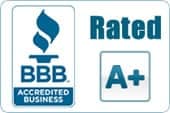Laundry sinks are fairly common in homes in and around the San Jose area. Whether free-standing sinks or mounted in a counter top… in a laundry room or in the garage, they provide an important function for many home-owners. Unfortunately they often see misuse as well. Let’s take a closer look at our dear friend, the laundry sink, as well as some of the proper (and improper) uses of them.
What Laundry Sinks Are For
Back in the “olden days”, laundry sinks were meant to… well, wash laundry. They were big and deep, and built sturdy, so that you could easily hand wash your clothes. With the growing use of washing machines, however, they began seeing less and less use.
If you have an older home, you may have a laundry sink that has taken on the use of a sort of “dump station” for the washing machine. Years ago, that was fine, but newer washing machines drain far faster than older ones, meaning that the small, 1 1/2” drain that most laundry sinks have can be an issue. While, technically, using these sinks as a discharge sink for your washer is “proper” use, a 2” laundry standpipe (properly trapped and vented), is better.
Besides serving as a form of indirect waste sink for the washing machine, they do have a couple other uses. Mainly, these days they are used for pretreating stained clothes, and for hand washing items that are too delicate for the washing machine.
What Laundry Sinks Are Not For
As mentioned earlier, laundry sinks are sometimes misused. Even some building contractors have been guilty of improperly using laundry sinks. From using them to wash paint brushes to even disposing of extra paint, to sheetrock mud, to dumping oil down them… The list goes on and on.
You probably already know that dumping things down the sink that do not belong there is bad for the environment, but it is bad for your plumbing as well. The drain pipes under the laundry sink are very small, and putting things down the drain that do not belong there can block them up fast.
Not only that, but the drain line also ties into the laundry drain (if you have a separate laundry standpipe), and often ties into your kitchen sink line as well, before going to the main sewer line. That is one line that you do NOT want to get clogged, or it can make a serious mess.
Also, consider this… I was at a house once, years ago, where they had the laundry sink in the garage, which was on a lower level than the kitchen. By the time the homeowner realized that he had a problem, the garage was flooded (and boxes of stuff stored in the garage were ruined). I tried to clear the blockage, but could not get it cleared.
It turns out that, after finishing a project he was doing, we washed the remaining Plaster of Paris down the laundry sink. It had hardened in the line, which required me to go under the house, and remove a 15’ section of his laundry line (and replace it) before flow could be restored.
The moral of the story is to never use your laundry sink for anything but laundry (and maybe washing your hands).
Don’t forget to check out our Laundry Stoppages page, and if you have issues with your laundry sink, call Allstar Plumbing. From clearing a blocked laundry line, to full laundry sink replacement, we have you covered.




